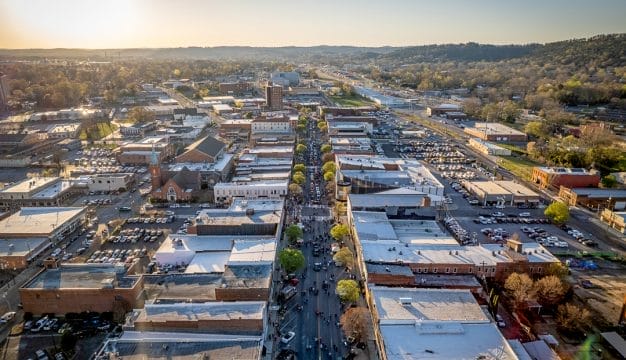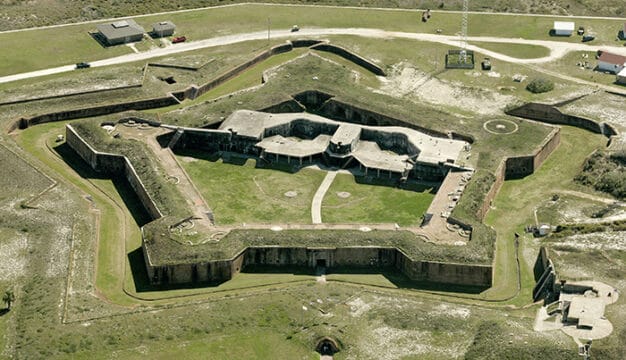Seventh-day Adventists in Alabama
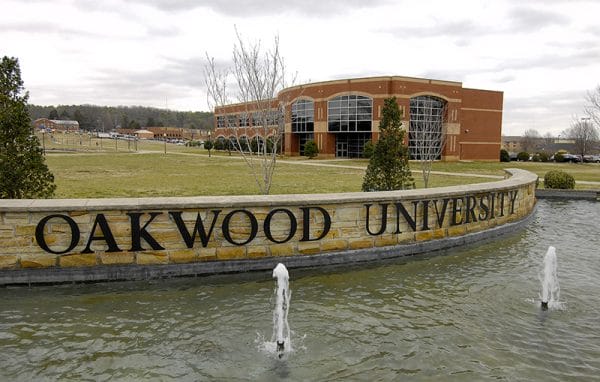 Oakwood University
The Seventh-day Adventist Church is an international denomination with a presence in 212 countries and a global membership (2018) of more than 21,000,000. Beginning with a small number of adherents in Alabama in the 1860s, by 2018 the church had grown to 115 churches and more than 20,000 members. In Alabama, the majority of denomination members are African American. Adventist administrative bodies in the state are the Southern Union Conference, Gulf States Conference, and South-Central Conference. The church has one institution of higher learning in Alabama, Oakwood University, in Huntsville, Madison County, and nine primary and secondary schools. Maintaining the Bible alone as their source of doctrine, Adventists currently hold to 28 fundamental beliefs, most prominent among them the observation of Saturday as the Sabbath and the imminent return of Christ.
Oakwood University
The Seventh-day Adventist Church is an international denomination with a presence in 212 countries and a global membership (2018) of more than 21,000,000. Beginning with a small number of adherents in Alabama in the 1860s, by 2018 the church had grown to 115 churches and more than 20,000 members. In Alabama, the majority of denomination members are African American. Adventist administrative bodies in the state are the Southern Union Conference, Gulf States Conference, and South-Central Conference. The church has one institution of higher learning in Alabama, Oakwood University, in Huntsville, Madison County, and nine primary and secondary schools. Maintaining the Bible alone as their source of doctrine, Adventists currently hold to 28 fundamental beliefs, most prominent among them the observation of Saturday as the Sabbath and the imminent return of Christ.
The Seventh-day Adventist Church was officially founded on May 21, 1863, in Battle Creek, Michigan. Its charter members were mostly whites from states north of the Mason-Dixon Line. Given its fledgling nature and the northern culture and worldview of its members, it was not until roughly a decade after the Civil War that the church established a substantial and permanent presence in the Deep South. Adventists’ methods of evangelism in the late-nineteenth-century South, such as they were, consisted of selling and distributing Adventist literature, holding gospel meetings in halls and tents, one-on-one and group Bible studies, discussing their faith with neighbors and friends, and providing education to recently emancipated blacks.
The progenitor of Seventh-day Adventists in Alabama was a white man named Jesse Morgan Elliott, a native of Bladon Springs, Choctaw County, who fought for the Union Army. Elliott became an Adventist while hospitalized from war injuries—he was blinded in battle—upon his discharge in 1866 he returned to his hometown, where he formed a small church. He was ordained to the ministry in 1880. Much later in 1894, a black Adventist presence was established in three Alabama cities. In Selma, Dallas County, Mississippian Tazwell B. Buckner sold Adventist literature and convinced several Baptist couples to become Adventists. Charles M. Kinney, the first African American to be ordained an Adventist minister, converted a number of blacks in Huntsville. In Birmingham, Jefferson County, Jim Pearson operated a medical practice for sick and destitute blacks in the city and organized a congregation.
Perhaps the most important development for Adventism in Alabama was the founding of Oakwood University in Huntsville. In January 1896, the denomination purchased a 360-acre former plantation for the purpose of establishing a school for the church’s black members. At the time, the total number of black Adventists in the entire church was only between 100-200, but greater efforts were being made by the church to evangelize blacks in the South. Many of these efforts centered around education. The purchase of the Oakwood property, then, was considered an act of faith by church leaders, that the black membership would grow and attend the school. On November 16, 1896, Oakwood opened with 16 students. From that modest beginning, in a matter of decades Oakwood would become a center of education for the church’s black members, training hundreds of ministers, musicians, educators, politicians, physicians, and other professionals. In 1932, its first black president, James L. Moran, was appointed; in 1958 it became a fully accredited college; and in 2008 Oakwood obtained university status. Throughout its existence, some of Adventism’s most distinguished figures have studied and taught at Oakwood, and today the church’s sole Historically Black College and University is an internationally recognized educational institution.
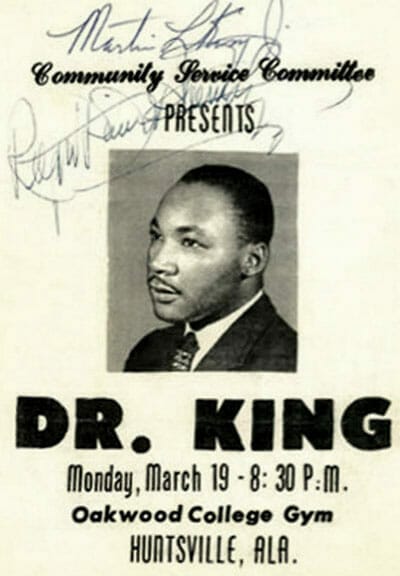 Martin Luther King Jr. Flyer
Alabama was consistently at the center of the modern civil rights movement. Even today the names of Birmingham, Selma, and Montgomery still evoke images of protesters, marches, fire hoses, and police dogs. In the 1950s and 1960s, the Adventist Church in the United States was predominately white and tended to be racially and politically conservative. As a result, white Adventist leaders discouraged members from getting involved in civil rights. Largely ignoring this, black members did engage in civil rights activities, and, Alabama was a major site for black Adventist participation in the movement. Oakwood students and teachers such as Theodore “T.R.M.” Howard, Arna Bontemps, Frank W. Hale, Alfonzo Greene, Sr., Edward “E.E.” Cleveland, Warren Banfield, and others held leadership positions in civil rights organizations, while black Adventists in other areas, most notably Irene Morgan of Virginia and Terrence Roberts of the Little Rock Nine in Arkansas, actually instigated the overturning of racist laws and policies. In March 1962, when Martin Luther King Jr. was turned away from several venues in Huntsville, administrators at Oakwood College invited him to speak at the campus auditorium, which he did on March 19. Numerous black Adventists were present at the Selma to Montgomery March, the March on Washington, and other epochal events. Meanwhile, many local white Adventist churches in Alabama remained segregated, in some cases well into the 1970s and 1980s.
Martin Luther King Jr. Flyer
Alabama was consistently at the center of the modern civil rights movement. Even today the names of Birmingham, Selma, and Montgomery still evoke images of protesters, marches, fire hoses, and police dogs. In the 1950s and 1960s, the Adventist Church in the United States was predominately white and tended to be racially and politically conservative. As a result, white Adventist leaders discouraged members from getting involved in civil rights. Largely ignoring this, black members did engage in civil rights activities, and, Alabama was a major site for black Adventist participation in the movement. Oakwood students and teachers such as Theodore “T.R.M.” Howard, Arna Bontemps, Frank W. Hale, Alfonzo Greene, Sr., Edward “E.E.” Cleveland, Warren Banfield, and others held leadership positions in civil rights organizations, while black Adventists in other areas, most notably Irene Morgan of Virginia and Terrence Roberts of the Little Rock Nine in Arkansas, actually instigated the overturning of racist laws and policies. In March 1962, when Martin Luther King Jr. was turned away from several venues in Huntsville, administrators at Oakwood College invited him to speak at the campus auditorium, which he did on March 19. Numerous black Adventists were present at the Selma to Montgomery March, the March on Washington, and other epochal events. Meanwhile, many local white Adventist churches in Alabama remained segregated, in some cases well into the 1970s and 1980s.
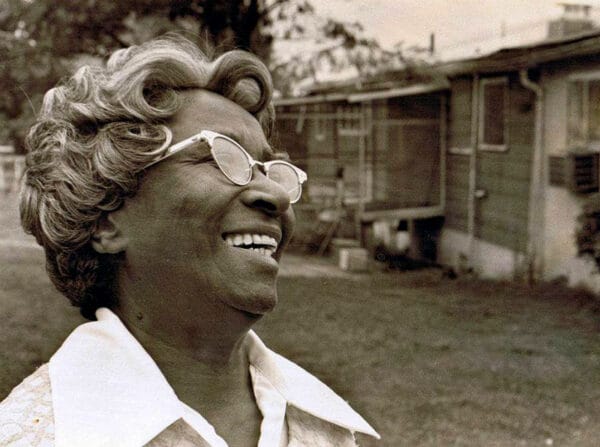 Chessie Harris
Just as vital as civil rights are the humanitarian efforts of Adventists in the state. Local Adventist churches throughout Alabama have been featured by media outlets for food pantries, prison ministries, orphanages, single mother support groups, welfare societies, and other benevolent programs. There have also been major humanitarian initiatives at the conference level. In one notable instance in early 1964, the South-Central Conference developed mobile medical clinics with trained health workers that visited poverty-stricken areas in Alabama, Mississippi, and Tennessee, giving free health care to the poor. Churches throughout Alabama supported the effort with volunteers and donations, and the ministry greatly expanded, the units aiding victims of hurricanes and tornados throughout the South. One such mobile unit was present in Memphis in March 1968 when King was assassinated and helped to restore order in the chaos that ensued. Humanitarians connected with Oakwood such as Chessie Harris, Mary Inez Booth, and the student-led National Association for the Prevention of Starvation, known as NAPS, have been recognized by local and federal governments for their work.
Chessie Harris
Just as vital as civil rights are the humanitarian efforts of Adventists in the state. Local Adventist churches throughout Alabama have been featured by media outlets for food pantries, prison ministries, orphanages, single mother support groups, welfare societies, and other benevolent programs. There have also been major humanitarian initiatives at the conference level. In one notable instance in early 1964, the South-Central Conference developed mobile medical clinics with trained health workers that visited poverty-stricken areas in Alabama, Mississippi, and Tennessee, giving free health care to the poor. Churches throughout Alabama supported the effort with volunteers and donations, and the ministry greatly expanded, the units aiding victims of hurricanes and tornados throughout the South. One such mobile unit was present in Memphis in March 1968 when King was assassinated and helped to restore order in the chaos that ensued. Humanitarians connected with Oakwood such as Chessie Harris, Mary Inez Booth, and the student-led National Association for the Prevention of Starvation, known as NAPS, have been recognized by local and federal governments for their work.
Seventh-day Adventists have one of the most elaborate governing systems among Christian denominations, and Alabama was no exception. In 1901, the church organized the Alabama Conference to direct its efforts in the state as well as in seven of Florida’s northern counties, with a membership of about 300. That same year, the Southern Union Conference was organized to coordinate five contiguous conferences, including the Alabama Conference. In 1932, Mississippi was added to the Alabama Conference to form the Alabama-Mississippi Conference, with just over 2,000 members. From 1944-1946, the Adventist Church formed regional conferences, or black-administered governing units, to direct the church’s efforts among blacks, owing to an unwillingness on the part of whites to integrate with blacks. At that point the black membership of Alabama came under the South-Central Conference, where it remains to the present. This race-based conference system mirrored the demographic separation of the local churches in Alabama, as it still does in many respects.
In 1975, the headquarters of the Alabama-Mississippi Conference was relocated from Meridian, Mississippi, to Montgomery. Nine years later in 1984 the Alabama-Mississippi Conference was renamed Gulf States Conference—adopting nomenclature that included the Florida counties—with a membership of 6,553. In 2003 the Office for Regional Conference Ministry, the headquarters of the nine regional conferences, opened on the campus of Oakwood University.
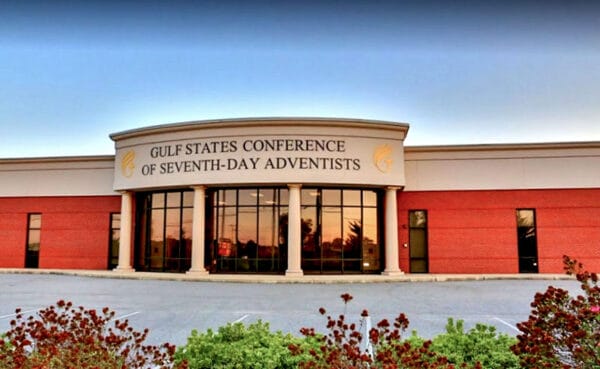 Gulf States Conference Headquarters
The majority of Seventh-day Adventists in Alabama reside in the state’s major cities. Given to the presence of Oakwood University, the most Adventists in Alabama reside in the Huntsville Metropolitan Statistical Area (which includes Madison, Madison County; Decatur, Morgan County; and Athens, Limestone County), with approximately 8,500 Adventists—not counting Oakwood’s student population of roughly 2,000—and more than 20 churches. Greater Birmingham hosts more than 3,000 Adventists, the Montgomery area has around 2,000, and Mobile has approximately 1,000. The church operates primary and secondary schools in Birmingham; Bryant, Jackson County; Clanton, Chilton County; Huntsville; Mobile; Montgomery; Owens Cross Roads, Madison County; and Vestavia Hills, Jefferson County. As of 2018, there were 17,646 Adventists in the Gulf States Conference, and the membership of South-Central Conference was 36,575, with Adventists in Alabama numbering 20,425. The racial demographics of Adventists in Alabama are approximately 63 percent black, 30 percent white, 6 percent Hispanic, and 1 percent Asian.
Gulf States Conference Headquarters
The majority of Seventh-day Adventists in Alabama reside in the state’s major cities. Given to the presence of Oakwood University, the most Adventists in Alabama reside in the Huntsville Metropolitan Statistical Area (which includes Madison, Madison County; Decatur, Morgan County; and Athens, Limestone County), with approximately 8,500 Adventists—not counting Oakwood’s student population of roughly 2,000—and more than 20 churches. Greater Birmingham hosts more than 3,000 Adventists, the Montgomery area has around 2,000, and Mobile has approximately 1,000. The church operates primary and secondary schools in Birmingham; Bryant, Jackson County; Clanton, Chilton County; Huntsville; Mobile; Montgomery; Owens Cross Roads, Madison County; and Vestavia Hills, Jefferson County. As of 2018, there were 17,646 Adventists in the Gulf States Conference, and the membership of South-Central Conference was 36,575, with Adventists in Alabama numbering 20,425. The racial demographics of Adventists in Alabama are approximately 63 percent black, 30 percent white, 6 percent Hispanic, and 1 percent Asian.
Additional Resources
Baker, Delbert W., ed. Telling the Story: An Anthology on the Development of the Black SDA Work. Loma Linda, Calif.: Loma Linda University Printing Services, 1996
Hansen, Louis A. From So Small A Dream. Nashville, Tenn.: Southern Publishing Association, 1968.
London, Jr., Samuel G. Seventh-day Adventists and the Civil Rights Movement. Oxford: University Press of Mississippi, 2009.
Warren, Mervyn A. Oakwood! A Vision Splendid Continues, 1896-2010. Collegedale, Tenn.: College Press, 2010.
